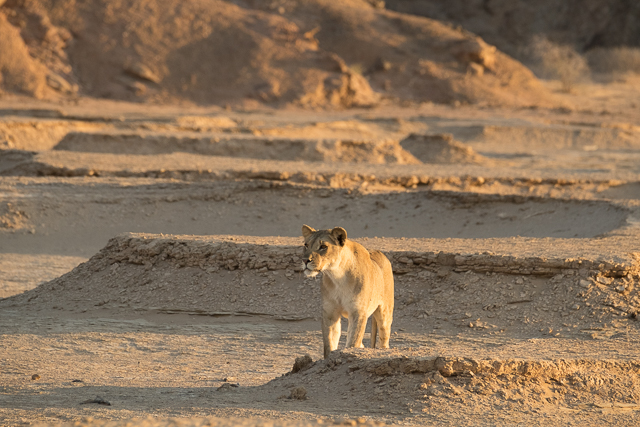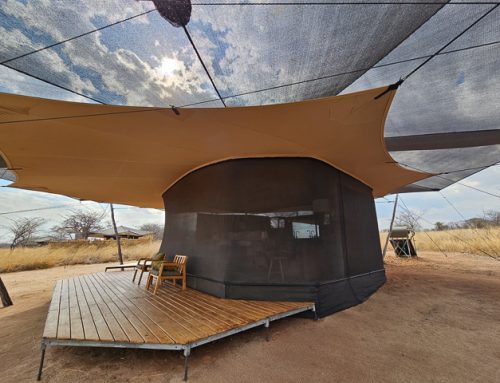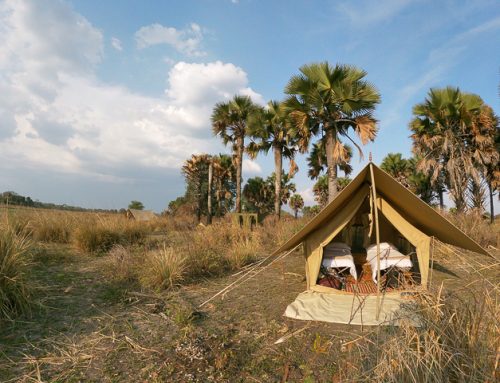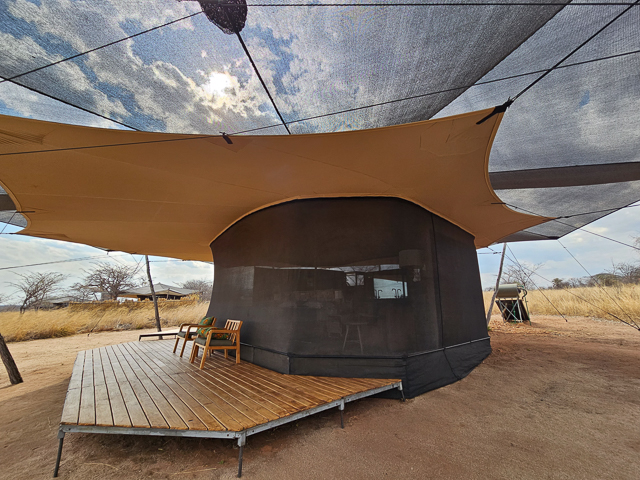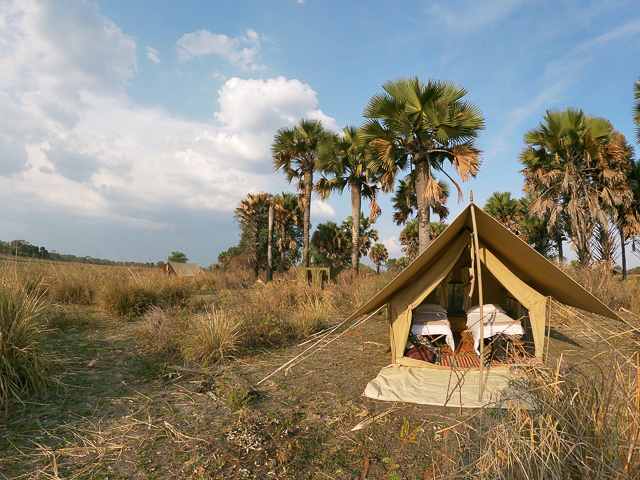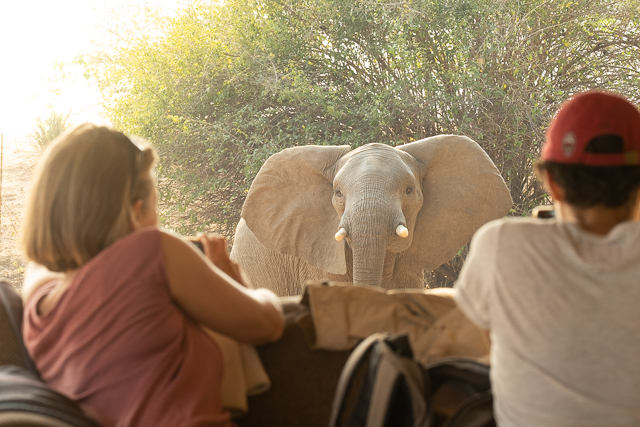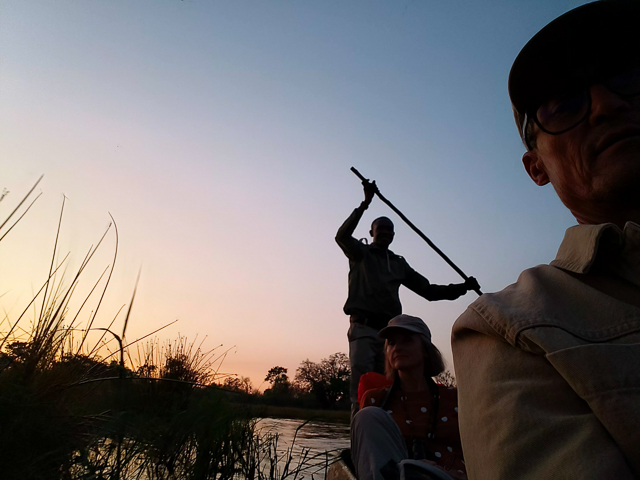February 2018
The rich ochre and black ridges and the flat, stony plains of the Skeleton Coast appear to have no life at all, but the Hoanib River wends its way through. The term “river” overflows with optimism, and not water. The Hoanib is actually a dry, sandy, meandering watercourse scattered with Ana trees. It was here, beside a waterhole, that we found them. Two hardy and hungry desert lionesses were drinking.
They were an adult female and her two year old niece, who has been with her aunt since October 2017 when she left her two sisters. We had heard their story from our local guide yesterday as we were driving in the dunes several miles to the west.
The three cubs’ mother died after attacking a male leopard more than a year earlier. The chances of survival for the one year old cubs were extremely slim, and depended on them reuniting with their aunt and on her accepting them.
Although lion cubs keenly observe kills from about 2 months old, even at 7 months they do not react properly to the stalking postures of adults, and as a result they often ruin hunts. Later they learn to wait and watch, gaining experience. They may, or may not, actively participate in hunts when they are a year old, so these year-old orphans raised in a desert were in a precarious position.
At the time the aunt had killed an oryx (a desert antelope) and amazingly came across the cubs, and led them to her kill. Since then her support had been ambivalent. Between sparse meals provided by their aunt, they managed to eke an existence, learning to fend for themselves, often far out in the desert. Here the environment is their challenge, as they are unlikely to come across many competitors. These four lionesses are the only lions for miles around.
The aunt’s brothers, known as the “Five Musketeers”, began to roam the area in search of females and a meal, but wandered too close to villages to the east. Sadly, the last of the Musketeers was killed by villagers eight months previously.
If any of these lionesses comes into season, they will need to roam far away from the relative sanctuary of the river, to the north or south, and roar, in the hope of finding a mate. This is indeed a desolate place for any animal, and especially for a desert lioness, dependent on stalking scarce prey to survive.
Soon afterwards a herd of desert elephants approached the waterhole, forcing the lions into a quick retreat. They lay down a safe distance away and we became absorbed with the elephants sating their thirst.
The elephants left and we returned our attention to the lionesses. We watched the large cub try and stalk an oryx, but it left at a canter. We then followed them through the desert and back to the riverbed where we left them at sunset in the shade of a tamarisk bush. The following day we found the two again, and watched them stalk a springbok, but they had no success. We finally watched them leave the riverbed and head out into the desert. I had an overwhelming sense of how precarious and fragile their existence is.
Will they still be here when I next return to this remote corner of Africa, and will they have managed to rear some cubs?
March 3rd is World Wildlife Day – a day to learn about and contemplate the delicate situation of all wildlife, and if you can, to help though spreading the word, or supporting organisations such as the Desert Lion Conservation, and others that aim to mitigate depleting wildlife and improve species diversity. This year is dedicated to the large cats.
Desert Lion Notes –
At the end of 2017 it is estimated that about 20,000 lions remain in Africa, a reduction of over 40% in the last 20 years, according to the IUCN. There are about 600 in Namibia, a country bigger than Texas. There are up to 150 lions in this corner of Namibia (the Kaokoland), an area about the size of West Virginia, although the population fluctuates considerably. This desert lion population has increased since the 1980s.
Update in 2019 –
I published an update on the lionesses in September 2019.

